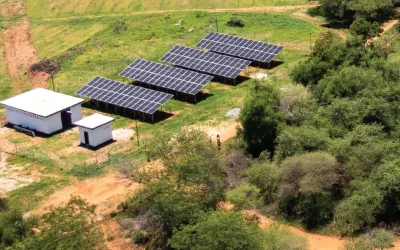Kuvimba creates over 3500 jobs
Kuvimba Mining House where Government has controlling stake, has become one of the largest employers in the country, with its operating mining assets dotted in many parts of the country collectively absorbing over 3 500 workers since its inception last year.
Kuvimba’s subsidiaries have brought life to the towns and areas where they are located as thousands of locals have been taken on board directly and indirectly, while local businesses are benefiting through forward and back linkages.
The venture between Government (65 percent), local and international investors (35 percent), is this week also expected to declare a dividend after posting impressive results in the last financial year.
Kuvimba, set up in pursuit of Government’s target of achieving a US$12 billion mining milestone by 2023 and also transforming the country into a middle income economy – has three operating gold mining assets – Freda Rebecca, Shamva and Jena Gold Mine.
It also has a stake in Bindura Nickel Corporation (BNC), the Darwendale Platinum Project (Great Dyke Investments) and Zim Alloys Limited.
Speaking after Freda Rebecca broke a 20-year production record by rolling out 300 kgs of gold in May alone this year, Kuvimba Mining House chief operating officer, Cobus Bronn, said within a space of a year the mining giant had managed to employ 3 518 workers across its assets.
The target, Bronn said, is to employ 20 000 in the short to medium term.
Bronn said Bindura Nickel Mine now has 1125 workers, followed by Shamva Gold Mine on 890, while Freda Rebecca and Jena Mine have 800 and 703 employees respectively all employed in the past year.
“The number of employees is expected to significantly increase as more mines are brought to operations soon,” he said.
“Kuvimba Mining House’s vision is to create sustainable growth for Zimbabweans through safe and responsible mining. This vision is achieved by instilling the following core values namely, integrity, being a good corporate citizen, accountability and fostering good team work.”
Bronn said resuscitation of the mines had brought life in Bindura, Shamva and Silobela where the firm’s subsidiaries operate.
“The social and economic impact that the companies have in the respective areas where they are located cannot be overstated,” he said.
“Kuvimba has an approved plan to roll out an extensive exploration programme to explore the various non-operating gold assets in order to determine the viability of recommissioning them. This is expected to be rolled out in the second half of 2021. Collectively, these no-operating mines which have been neglected for a while have the potential to produce in the excess of 1,200kg of gold per year and employ more thousands of people.”
At BNC, Kuvimba has finished the shaft deepening process, which allows the firm to extend mine life by seven years while Zim Alloys is now out of judicial management.
All creditors have been paid at Zim Alloys and production is expected to start before September this year.
Kuvimba shareholding has been structured in a way that benefits about five special interest groups identified by Government and these include the youths, women and war veterans, depositors and pensioners — who suffered losses during the currency reforms of 2019.
There is also the farmers’ deed of settlement where Government is targeting to pay up to US$3,5 billion to about 4 000 white former commercial farmers for improvements on the land they had done before the state repossessed land for redistribution under the land reform programme.
The newly resettled farmers have quickly mastered the art and some of them have become experts in the growing of tobacco, maize and horticulture crops for the export market.-ebusinessweekly.clz.w








